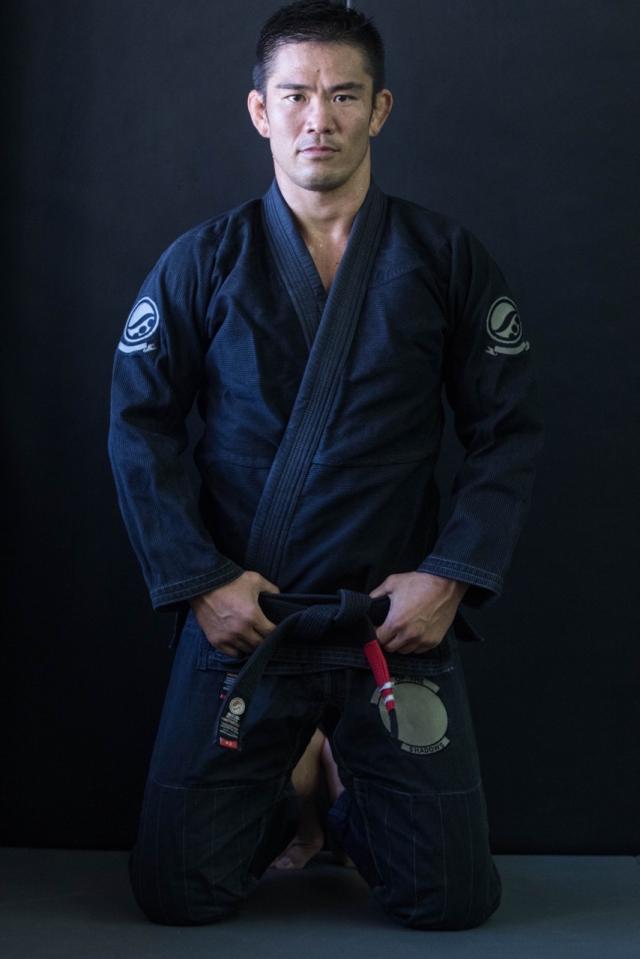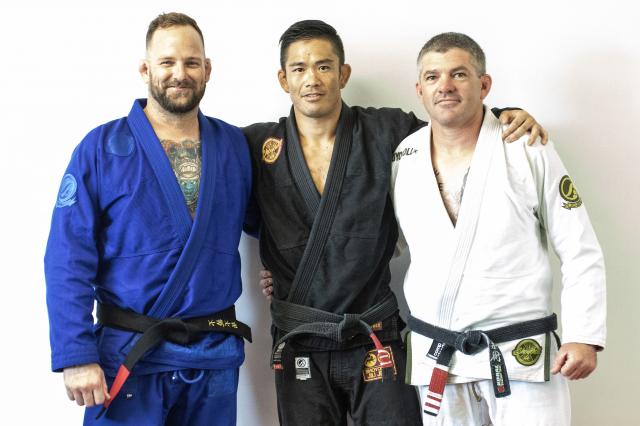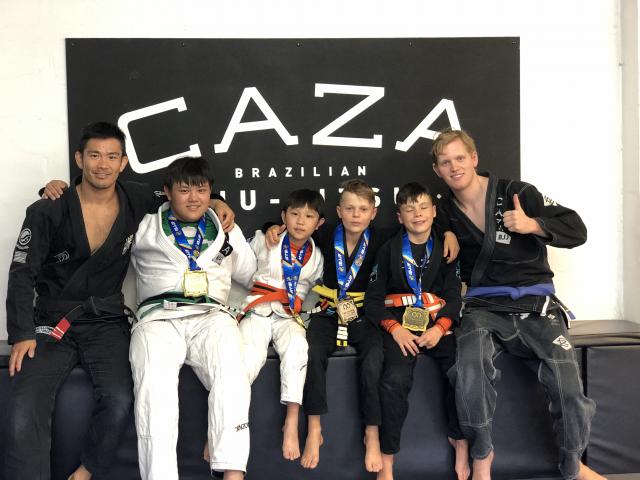There are those in Australia who will tell you that Brazilian Jiu-Jitsu is one of the fastest, if not the fastest growing sports in Australia.
For those who wish to learn more you need to look no further than 153 Cooyar Street, Noosa Heads for this is the home of the Caza Jiu-Jitsu Club. To gain entrance, you walk through the ground floor door, up a flight of stairs, turn left and step into the dojo.
On entering the dojo, you will be greeted by the owner and head instructor Professor Yoshi Hasegawa, Black Belt 3rd Dan. The warm greeting immediately puts visitors at ease. The floor of the dojo is covered by the traditional martial matting known as tatami, and the dojo is spotless and tidy. From the time of his arrival in Noosa in 2012 till now, Yoshi has established a club in our local world of Brazilian Jiu-Jitsu, not only successful but also highly respected.
Born in Tokyo in 1978, Yoshi’s family shifted to the small town of Chigasaki, when Yoshi was just three years of age.
It was during his school years that, at age eight, Yoshi, like all other students, underwent training in martial arts, namely judo or kendo which he continued for some three years. At age 13 he then started Shotokan Karate, but the heavy emphases on the Karta (a set of moves set to a pattern) caused him to lose interest. By age 23, Yoshi had gained tertiary qualifications in accounting and business administration from Japan and the United States, and was also continuing his study of the English language.
It was during this time that he started training in Brazilian Jiu-Jitsu (referred to as BJJ) under Beverley Hills instructor Marcus Vinicius. He went on to join the famous Carlson Gracie team and trained with the renound BJJ practitioner Rey Diogo in Los Angeles.
It was Diogo who took him to his brown belt grading. Yoshi had also started travelling to Brazil, considered by many to be the home of BJJ, when he was a white belt and would continue to do so over the years, while also continuing his training in the US. He had also become heavily involved in competition and, to broaden his experience, he travelled to Sao Paulo in Brazil for a further 18 months of hard training at the famous Barbosa BJJ. It was here that Yoshi was promoted to black belt, then on returning to the United States, he was also graded black belt status by Rey Diogo.
On returning to Japan, Yoshi commenced teaching classes in BJJ and also spent time teaching ground techniques to professional Mixed Martial Arts fighters. He conducted seminars in Phuket Thailand and other places. This opportunity enable him to commence building a profile with visiting Australian BJJ practitioners. According to a senior club member, “This culminated in Yoshi being invited to Australia in 2012 by the owner of the Infinite Martial Arts Club in Caloundra. A major aim of this was to help spread BJJ in Noosa.”
Now after several years the CAZA BJJ Club in Noosa is a well established and successful martial arts club. Working along with Yoshi there are some five black belt senior members who assist when required. Also, there are well presented brochures available which give interested parties the required information for both kids and adults’ training times and age groups, for various classes. It is interesting to note the CAZA club of Noosa, as do other clubs, offers parents and kids from two to four years a 30-minute class, all done under a happy, careful fun supervision.
During his time while teaching in Noosa, Yoshi has continued to be part of the global BJJ family. A trip to the US in 2016 saw Yoshi receive a promotion to second degree black belt.
In 2018 he received his third degree from Rey Diogu.
When we look at the history and tradition of Jiu-Jitsu, it tells of the difference between Jiu-Jitsu and Brazilian Jiu-Jitsu (BJJ). It is believed by many historians that Jiu-Jitsu was considered the battlefield art of the Samurai of Japan, essentially developed to allow the Samurai to fight effectively in the event they found themselves disarmed and on foot. However, the BJJ is considered to be more along the lines of a sport with more focus on ground fighting and submission grappling.
Therefore, BJJ offers lots of opportunity for sport, whereas the Japanese art offers little or no opportunities in that area. This could be a major factor in the rapid growth of BJJ throughout Australia. It is now some time ago that a native writer on Jiu-Jitsu said, “In order to fully master any martial art, it is essential to learn under a competent teacher.”
Results in both training of the art and competition have shown that Professor Yoshi Hasegawa is such a person we wish him and his staff every success.
Regarding competition, 2020 saw the club finish third in the Sunshine Coast overall champion team and the following year 2021, they were successful in winning the championship. In individual competition, Samuel Morrison and Toby Parsons, both of whom are kids’ class instructors, also won their divisions. They are just a few of the many who are now making their presence felt.
Apart from teaching and competing, the CAZA club has offered its support in the community, working with STEPS Autism Treehouse, an organisation formed to assist families with children with autism. In doing so, the club ran a six-week course in basic self-defense, fitness, help exercises and body movements. This gesture of kindness involving children, typifies the true character of the club.









